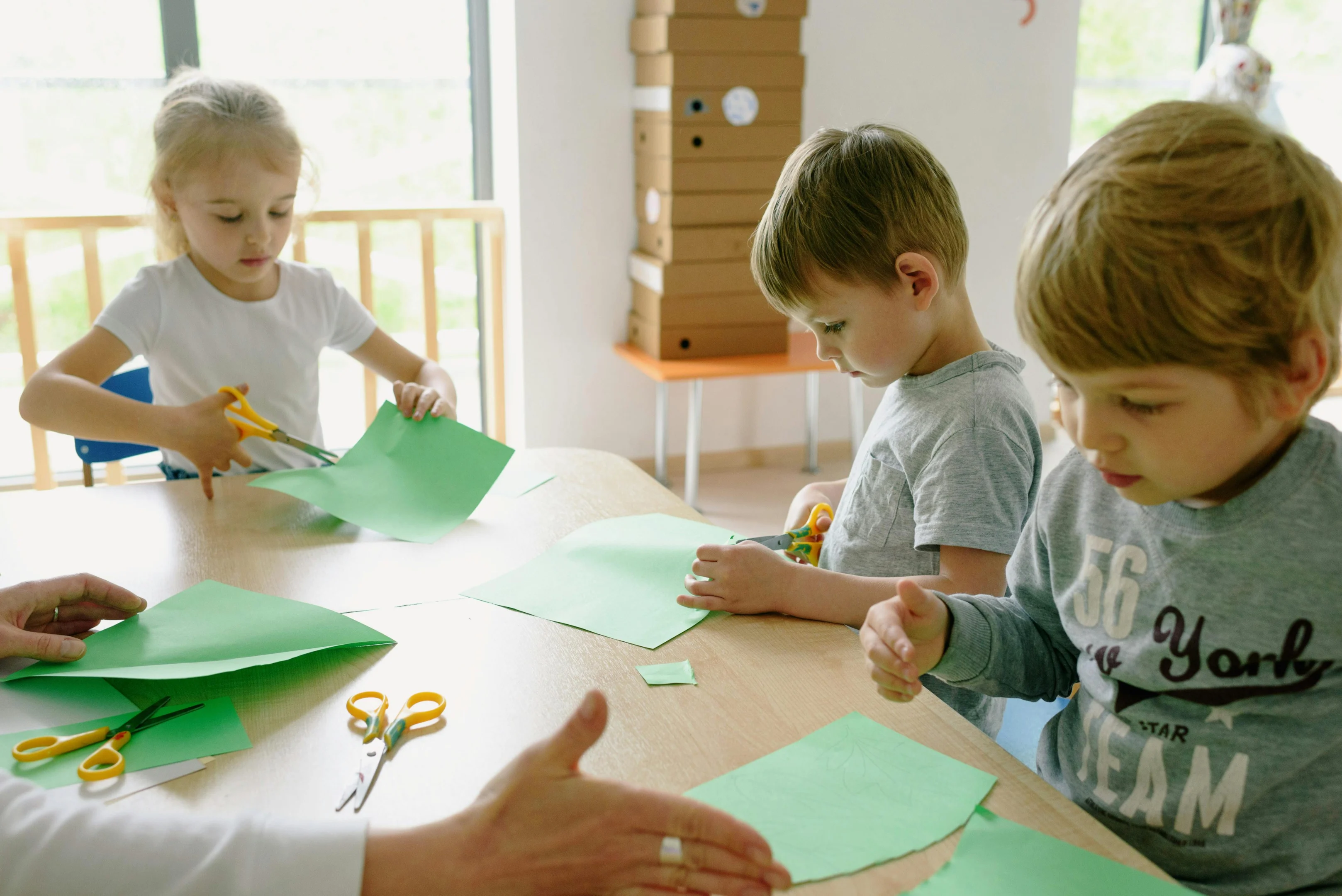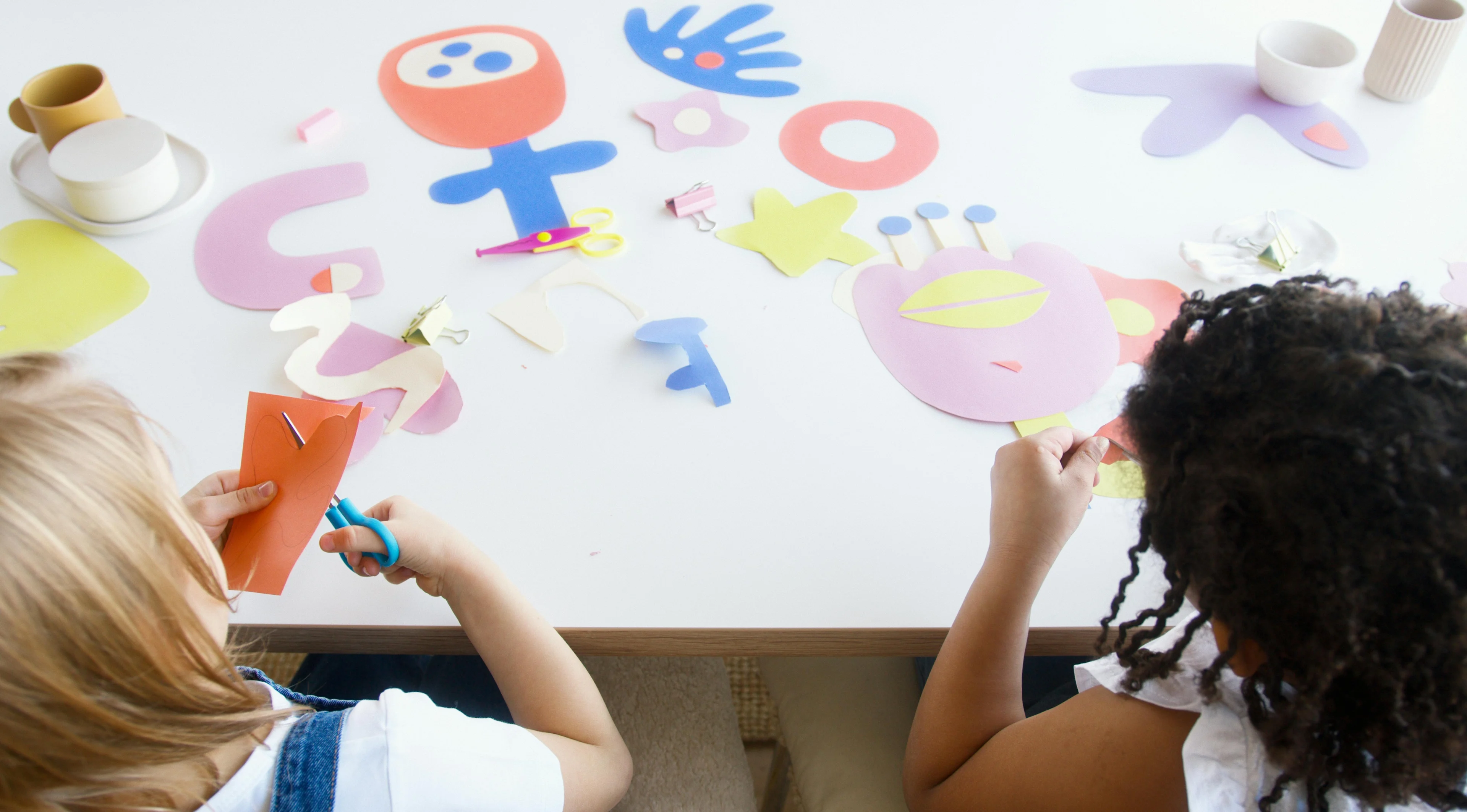
Cutting with scissors sounds so simple, doesn’t it? We take so much for granted as adults that sometimes we forget how much new learning happens when we grasp a new skill like learning to cut using a pair of scissors.
How Do I Know My Child Is Ready to Use Scissors?
Even though they may seem simple to use to us, learning to use a pair of scissors correctly may take children quite a while to learn because it takes good hand-eye coordination. They also need good strength in their hand, arms and shoulders. Before you introduce scissors, look out for signs that your child is ready. Are they:
able to sit up with good balance?
ready to listen to simple instructions?
able to focus for at least a few minutes?
showing an interest when an adult uses a pair of scissors to cut and snip?
How Do I Choose Which Scissors to Give My Child?

Adult scissors are often too heavy for little hands, so choose a small, light pair of scissors to start with. There are lots of child-friendly scissors on the market. Most children’s scissors have plastic handles that fit little hands perfectly and have dull, rather than sharp edges.
If your child is using a dominant hand to do most day-to-day tasks, like feeding themselves with a spoon, give them a pair of scissors in line with their favored hand. You can buy both left-handed scissors and right-handed scissors that are designed differently and according to which hand you favor.
For younger children, or children who have delayed fine motor skills, you can also buy spring-loaded scissors. Spring-loaded scissors can feel a little bit like opening and closing a peg and they help a child learn the motion of pinching and releasing to open and close a pair of scissors.
How Old Should My Child Be Before I Teach Them Scissors Skills?
There is no right or wrong answer to this question when it comes to teaching scissor skills. It’s all about you and your child, how your child responds, and how motivated they are. Sometimes, we can get a bit worried about children having scissors, but if you are using a child-friendly pair and there is close adult supervision, there are many more benefits to having a go than there are risks.
If you work in a childcare setting, and you are all worried, do a simple risk assessment first to eliminate any potential risks and to think about the risk benefits. Always ensure an adult is in sight and always teach children how to hand a pair of scissors to someone else by the handle and not by the blade.
If you feel your child is not ready to practice cutting skills yet, there are many ways you can support them to develop their hand and arm muscles so that they become strong enough.
Try the ideas below to build strength in the hands, arms and shoulders:
Pegging out washing
Squeezing and rolling out playdough
Pegboards
Threading beads on a string
Hammer and peg bench
Finger action rhymes like Incy Wincy Spider
Mark making with paint brushes and water
Making big circles with ribbon sticks.
Squirting water with water pistols or squeeze bottles
Practice Makes Perfect

When you think your child is ready to practice scissor skills, give them plenty of opportunities to revisit using scissors. Practicing is key in scissor cutting. Children need to build up their scissor skills in the same way they need to practice using a spoon or a pencil until they have grasped it.
It’s also a great idea for your child to see you, role-modeling how to use a pair of scissors. Remember that you are your child’s greatest role model, so whatever you do, your child will want to do too.
Fun Cutting Activities Using Scissors
Set up an area to practice cutting out with lots of different activities like the ones below:
Paper / Card
Provide lots of different paper to practice making cuts. Children will probably just make little snips at first before they learn how to cut straight across a piece of paper, and that’s fine. Learning how to snip is the first step.
Collect plenty of junk mail, leaflets, magazines and newspapers, old cereal boxes, packets, and old envelopes to practice on. If you have scraps of different textured paper, add those in too. You could even collect scraps of old materials to add to your junk modeling area to practice cutting and snipping skills.
Different Textures
Cutting through paper is very different from cutting play dough or clay. The more opportunities we can provide, the better children will get at snipping and cutting. So in your play dough or clay area, always include a pair of plastic scissors. You can also use scissors when you are baking with pastry or salt dough to cut out pastry strips.
Using Scissors for a Real Purpose
Real-life, experiential learning is always the best kind of learning, so try to find as many ways as possible to include using scissors for a real purpose in your day. Here are just a few examples:
Cut pieces of string when building a den
Cut wool when weaving along a grid
Cut garden twine to support plants and vegetables in the garden
Cut and snip cress, chives, and lettuce in the vegetable garden
Cut open snacks like crisps and popcorn
Snip blades of grass if you have an outdoor small world area
Cut out pictures to make a collage
Scissor Cutting Skills

Very often, children will learn to cut by first making lots of tiny little snips. Let them experiment with this as they are finding out that scissors can cut. You can gradually introduce them to straight lines to see if they can cut a piece of paper in half.
Cutting in a straight line can be tricky for little hands. Not only do you have to make the scissors open and close with one hand, you have to guide the paper with the other and keep your eye on the line. It takes a lot of hand-eye coordination and visual perception so be patient. Draw straight lines for them to cut along and help them guide the scissors down the lines.
Cutting things out or cutting around things is also a very tricky skill. Give lots of simple shapes to practice with first. For example, some large basic shapes like a circle and triangle are a good place to start. Your child will need good coordination and balance as they have to manipulate the paper with one hand, while cutting out the shape with the other. This can take a long time to develop and takes a lot of practice.
Learning How and When to Use Scissors
It’s tempting when you have first learned to use a pair of scissors to want to try out your new skills at every opportunity. Many children experiment with cutting their own hair if given the chance. If you think about it, they are only doing what they have seen the hairdresser or barber do. But the results can be a lot more haphazard, so to prevent any unwanted haircuts or other unnecessary cuts, make sure you store your pairs of scissors somewhere safe until your child is at the stage to understand how to use scissors responsibly.
Have fun.
